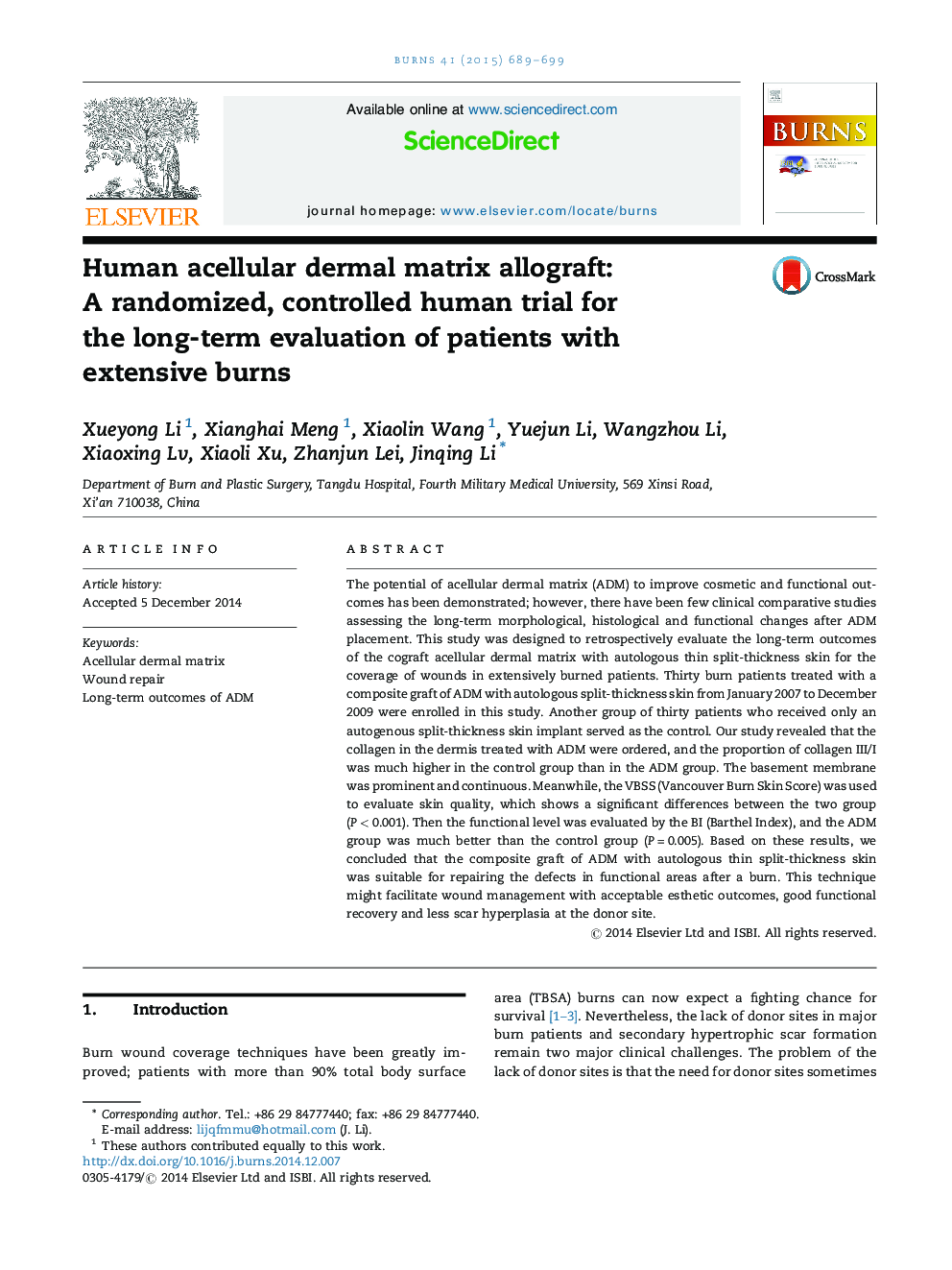| کد مقاله | کد نشریه | سال انتشار | مقاله انگلیسی | نسخه تمام متن |
|---|---|---|---|---|
| 3104284 | 1191648 | 2015 | 11 صفحه PDF | دانلود رایگان |

• We evaluated the long-term outcomes of the grafting with ADM for the coverage of wounds.
• The proportion of collagen III/I was lower in the ADM group.
• The basement membrane was prominent and continuous in the ADM group.
• The composite graft of ADM was suitable for repairing functional areas.
The potential of acellular dermal matrix (ADM) to improve cosmetic and functional outcomes has been demonstrated; however, there have been few clinical comparative studies assessing the long-term morphological, histological and functional changes after ADM placement. This study was designed to retrospectively evaluate the long-term outcomes of the cograft acellular dermal matrix with autologous thin split-thickness skin for the coverage of wounds in extensively burned patients. Thirty burn patients treated with a composite graft of ADM with autologous split-thickness skin from January 2007 to December 2009 were enrolled in this study. Another group of thirty patients who received only an autogenous split-thickness skin implant served as the control. Our study revealed that the collagen in the dermis treated with ADM were ordered, and the proportion of collagen III/I was much higher in the control group than in the ADM group. The basement membrane was prominent and continuous. Meanwhile, the VBSS (Vancouver Burn Skin Score) was used to evaluate skin quality, which shows a significant differences between the two group (P < 0.001). Then the functional level was evaluated by the BI (Barthel Index), and the ADM group was much better than the control group (P = 0.005). Based on these results, we concluded that the composite graft of ADM with autologous thin split-thickness skin was suitable for repairing the defects in functional areas after a burn. This technique might facilitate wound management with acceptable esthetic outcomes, good functional recovery and less scar hyperplasia at the donor site.
Journal: Burns - Volume 41, Issue 4, June 2015, Pages 689–699